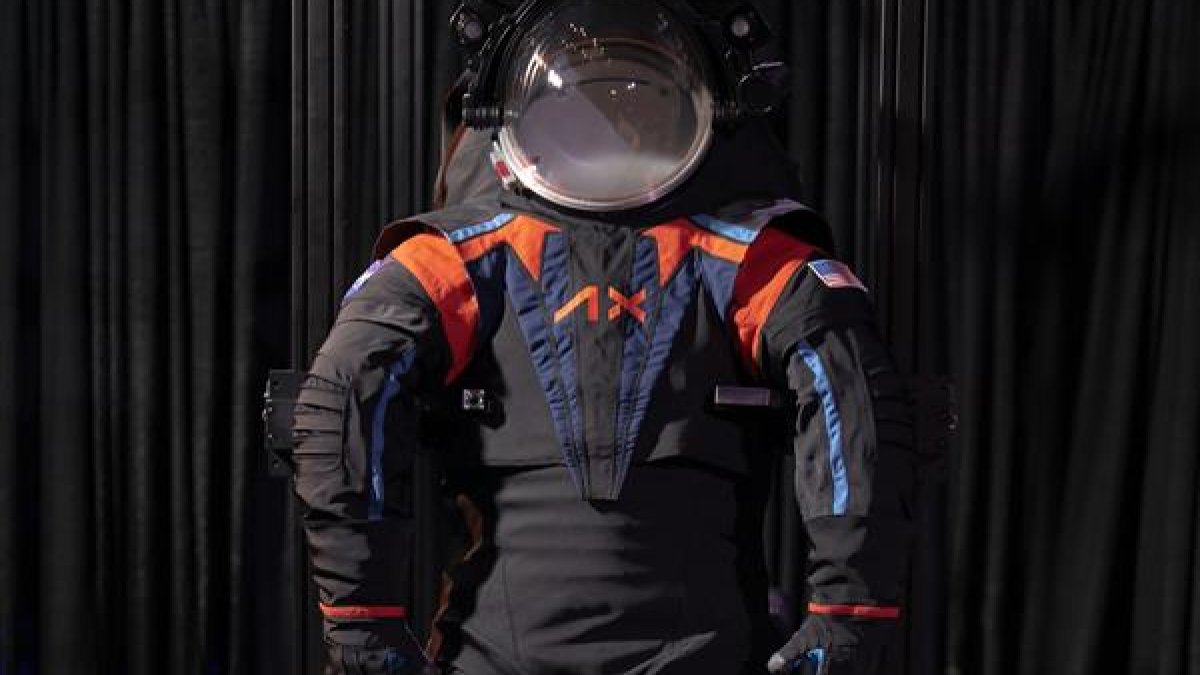More flexible and resistant. These will be the new spacesuits that the crew of Artemis III will use on the lunar surface and of which a prototype was presented this Wednesday which shows significant improvements over those used in the Apollo program.
Designed by the end of 2025, the Artemis III crew, which will include the first astronaut to set foot on the Moon, will arrive at the satellite’s south pole, where “extreme” temperatures and “hostile” environmental conditions may be registered, dressed in 21st century suits designed and manufactured by Axiom Space.
“These new suits have more features and capabilities,” Vanessa Wyche, director of NASA’s Johnson Space Center, said Wednesday during a presentation and demonstration of the suit made by the private Texas-based company.
For her part, Lara Kearney, from NASA’s Extravehicular Activity and Human Mobility on the Surface Program, pointed out that the suit, although the prototype presented this Wednesday was black -the idea is that it should be white for reasons thermal-, will allow much more “mobility” to the astronauts.
“This is a service contract,” said Kearney, who recalled that “historically NASA has manufactured and owns the spacesuits” used in missions, but in the case of the Artemis III Axiom , it will supply the suits under a $228.5 million contract. .
He added that the space uniform has yet to pass tests which will measure aspects such as safety and which will be carried out at the Johnson Space Center.
For his part, the president of Axiom Space, Michael Suffredini, stressed that the suits are the result of a strategic alliance between the private firm and the experience of NASA.
“We are continuing NASA’s legacy by designing an advanced spacesuit that will allow astronauts to operate safely and efficiently on the Moon,” Suffredini said in a statement, promising that the Artemis III suit “will be ready to take on the complex challenges of the lunar south pole”. ” and contribute to the objective of “a long-term presence on the spot”.
“Our work will open opportunities for more people to explore and conduct scientific research on the lunar surface and demonstrates American innovation,” NASA Administrator Bill Nelson said in a Twitter post.
Improved boots, gloves and high definition cameras
“Gloves are an essential part of the design,” said Russell Ralston, deputy director of Axiom Space’s extravehicular activities division, during a demonstration of the prototype being donned by a company engineer.
Ralston explained that engineers spent a considerable amount of time designing the gloves, and with innovative technologies they will be able to handle a wider variety of tools.
Particular effort also deserved the development of the insulation layers in the spacesuit, especially the gloves and the boots, the latter being another remarkable element of the suit in the making of which the costume designer Esther Marquis, from the series ” For All Mankind”. AppleTV+.
Made up of “lots of layers”, the Axiom suit has a rear entry that crew members will enter through, as well as more joints in the legs and arms that provide greater flexibility compared to suits used 50 years ago on NASA’s Apollo missions.
The helmet has a set of lights and a high-definition video camera, while the life support system where oxygen is stored will be located on the rear of the astronauts.
The suit has a compendium of technological innovations which, however, could not exclude an essential element for the astronauts who wear them: diapers.
NASA is seeking to establish a permanent presence on the Moon through the Artemis program, whose first mission returned to Earth on December 11 after 25 days of travel, during which time the unmanned spacecraft Orion circled the Moon .
The US space agency plans to send Artemis II in November 2024, a mission that will follow the same route as its predecessor but with a crew, the same to be announced on April 3.

